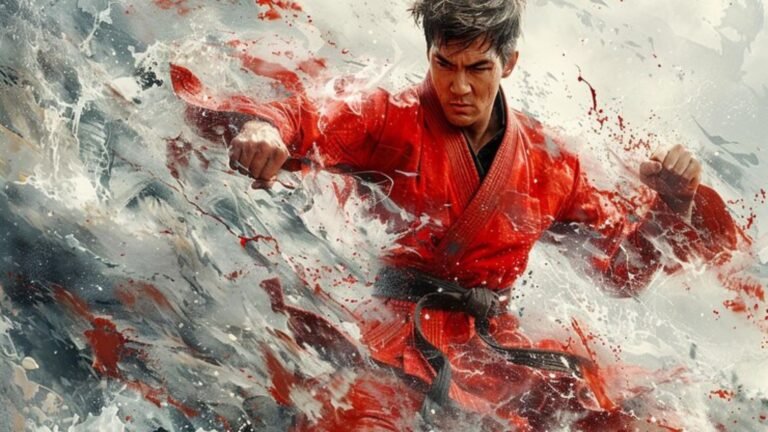Art has always been a powerful medium for expression, allowing artists to convey emotions, ideas, and cultural narratives. One of the most compelling and dynamic forms of art is the depiction of movement—specifically, the act of “punching the air.” This striking visual can symbolize various themes such as strength, struggle, liberation, and resilience. In this article, we will explore the concept of punching the air art, its significance, techniques used by artists, and how it reflects the human experience.
Understanding Punching the Air Art
The Concept of Movement in Art
Art that captures movement offers viewers a glimpse into the dynamic nature of life. Whether it’s a dancer in mid-performance or an athlete caught in action, these images can evoke powerful emotions and tell compelling stories. Punching the air art specifically emphasizes the action and energy behind a gesture, allowing for various interpretations and emotional connections.
Symbolism of Punching the Air
The act of punching the air can represent a variety of concepts:
Defiance and Resistance: In many cultures, punching the air can symbolize standing up against oppression or injustice. Artists may use this imagery to comment on social issues, encouraging viewers to reflect on their own experiences and challenges.
Joy and Celebration: Conversely, punching the air can also express elation or victory. Athletes often celebrate their successes with this gesture, capturing the essence of triumph and achievement.
Frustration and Anger: The act can also signify frustration or anger, allowing artists to explore the darker aspects of human emotion and experience.
Techniques Used in Punching the Air Art
Various Mediums
Artists employ a range of mediums to capture the essence of punching the air. Here are some popular forms:
Painting: Through bold strokes and dynamic colors, painters can depict the energy and motion of punching the air. Impressionistic styles can capture the fleeting moment, while abstract art may convey the emotional intensity behind the action.
Sculpture: Three-dimensional representations of punching the air can evoke a powerful sense of presence. Sculptors may use materials like clay, metal, or stone to create figures frozen in motion, allowing viewers to appreciate the physicality of the gesture.
Photography: Capturing the moment of someone punching the air can convey raw emotion. Photographers often use fast shutter speeds to freeze the action, highlighting the energy and spontaneity of the moment.
Color and Composition
The choice of color and composition plays a significant role in how punching the air art is perceived.
Color: Bright, vibrant colors can evoke feelings of joy and celebration, while darker tones may reflect struggle or frustration. Artists often choose colors that resonate with the intended emotion behind the piece.
Composition: The arrangement of elements within the artwork can guide the viewer’s eye and enhance the sense of movement. Diagonal lines or asymmetrical arrangements can create a dynamic feeling, making the act of punching the air even more impactful.
Cultural Context of Punching the Air Art
Global Perspectives
The act of punching the air has different meanings across cultures. In many African and African-American communities, it can symbolize empowerment and resistance against oppression. Artists from these backgrounds often depict this gesture in their work to celebrate resilience and strength.
In contrast, in Western cultures, the act may be associated more with sports and celebration. Athletes punching the air after a victory can inspire feelings of hope and achievement, emphasizing the importance of striving for one’s goals.
Contemporary Movements
Contemporary artists often incorporate themes of social justice and personal empowerment into their work. Punching the air art serves as a powerful visual metaphor for activism, resilience, and the ongoing struggle for equality. Many artists use this imagery to challenge societal norms and encourage dialogue about important issues.
Famous Artists and Their Interpretations
Jean-Michel Basquiat
Jean-Michel Basquiat was known for his powerful and often chaotic works that addressed social issues, race, and identity. His paintings often featured dynamic figures in motion, symbolizing struggle and defiance. The act of punching the air is a recurring theme in his work, emphasizing the fight against societal oppression.
Keith Haring
Keith Haring’s art is characterized by bright colors and bold lines. His figures often appear to be in motion, celebrating life and freedom. The imagery of punching the air is present in his works, symbolizing joy, triumph, and community. Haring’s art resonates with themes of love, acceptance, and activism.
The Impact of Punching the Air Art on Society
Inspiring Resilience
Punching the air art has the power to inspire individuals facing challenges in their lives. The imagery can serve as a reminder that resilience and strength can overcome adversity. It encourages viewers to confront their struggles and to find empowerment in their actions.
Encouraging Dialogue
Art that captures the act of punching the air can provoke important conversations about social issues. It invites viewers to reflect on their experiences and consider the broader implications of resilience and empowerment in society. Artists often use their platforms to raise awareness and inspire change.
Conclusion
Punching the air art is a compelling and dynamic form of expression that captures the essence of human emotion and experience. Through various mediums and techniques, artists can convey themes of defiance, joy, frustration, and resilience. This powerful imagery resonates with audiences, encouraging dialogue about personal and societal struggles.
ALSO READ:Xploring The Benefits To Acid Dyes: Advantages In Textiles And Beyond
FAQs
What does punching the air symbolize in art?
Punching the air can symbolize various themes such as defiance, joy, frustration, and resilience. It represents the human experience and the emotions associated with struggle and triumph.
What mediums are used to create punching the air art?
Artists use a variety of mediums, including painting, sculpture, and photography, to capture the essence of punching the air. Each medium offers unique ways to convey motion and emotion.
How does punching the air art reflect cultural perspectives?
Punching the air has different meanings across cultures. In some communities, it symbolizes empowerment and resistance against oppression, while in others, it represents celebration and achievement.
Who are some famous artists known for punching the air art?
Jean-Michel Basquiat and Keith Haring are two notable artists who have incorporated the act of punching the air into their work, exploring themes of social justice, identity, and empowerment.
Why is punching the air art important in contemporary society?
Punching the air art inspires resilience and encourages dialogue about important social issues. It allows artists to use their platforms to raise awareness and inspire change in their communities.

